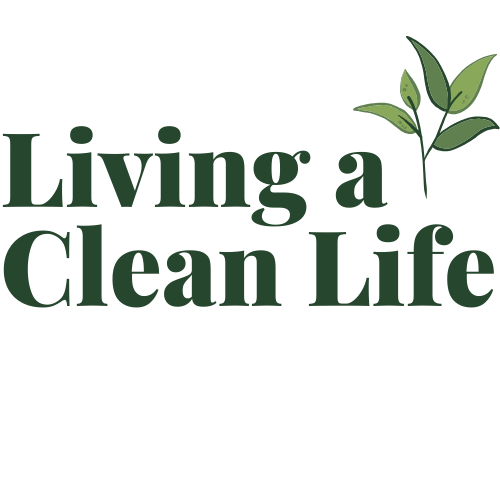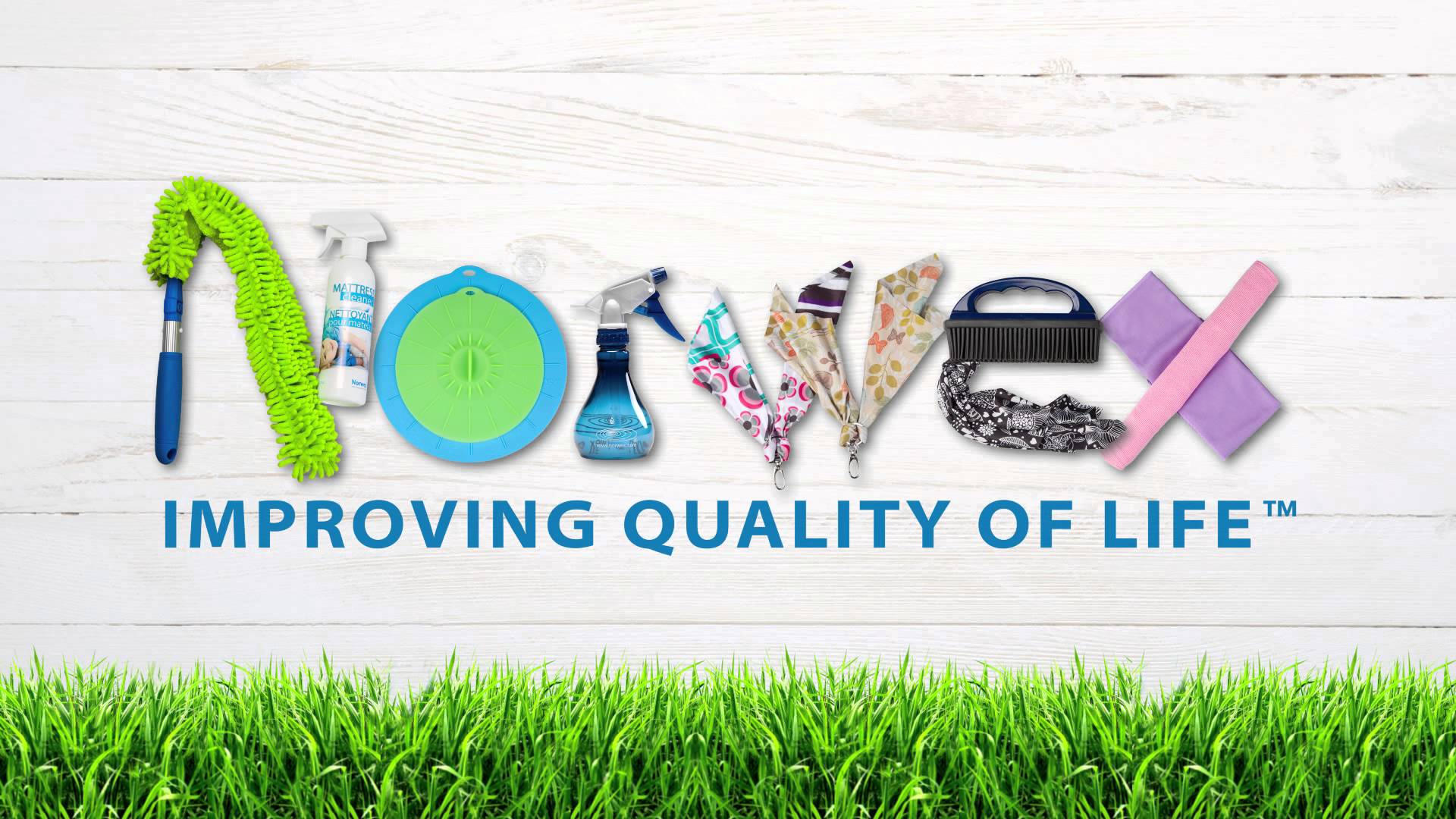Disclosure: We are reader-supported. If you buy through links on our site, we may earn a small commission. Learn more.
I honestly don’t even know where to begin with this post, and let me warn you now, it is a LONG one. Please bear with me and read the entire post as there is a lot of important information.
If you're on this blog, you probably already know that we're exposed to harmful chemicals every day... This is both out in the real world and inside our own homes.
Our everyday cleaning products are some of the worst offenders. We use these products on our floors, kitchens, and bathrooms. The search for non-toxic cleaning solutions led me down a rabbit. While this article wasn't initially a Norwex review, the company is behind many of the safer and more environmentally friendly options that I now use in my home.
In this Norwex review, I'll examine the urgency for safer cleaning products and also show some of the best solutions. Let's get started!
80,000 new chemicals in the last 50 years
People often say to me, "Our parents grew up using these cleaning products and they turned out fine". The truth is, over 80,000 new chemicals have been created in the last 50 years and only about 200 have been tested for their impact on human health. The cleaning products on the market today are not the same products our parents grew up using.
200 chemicals found in newborn umbilical cord blood
When I found out I was pregnant with my first child, I remember reading an article with a study done by the EWG (environmental working group) that found more than 200 chemicals in newborn umbilical cord blood. This means our body burden (chemicals that accumulate in the human body) starts before we are even born, and indoor air pollution is one of the top 5 highest ranking environmental health problems.
"We know the developing fetus is one of the most vulnerable populations, if not the most vulnerable, to environmental exposure," said Anila Jacobs, EWG senior scientist. "Their organ systems aren't mature and their detox methods are not in place, so cord blood gives us a good picture of exposure during this most vulnerable time of life."
I started researching better options for safer cleaning products. At the time (almost 10 years ago), The Honest Company was just starting out and I used a lot of their products, which I still think are good products.
Norwex
A few years ago I came across a company called Norwex, and there is no turning back for me. This is a company I love and a topic I am very passionate about. Norwex is a Norwegian company, founded in 1994, whose mission is to improve the quality of life by radically reducing chemicals in our homes, helping families across the world transform their homes into safe havens. This company is the real deal, they just celebrated 26 years, and their products have stood the test of time.
While my initial obsession (because let's be honest, that’s what it is) started with making healthier choices for my family, now I find myself equally passionate about the environmental impact (as is the micro, as is the macro). Small decisions we make every day, no matter how small, can have a huge positive effect on our health and the planet.
Environmentally Friendly
Decreasing my carbon and chemical footprint is very important to me. As I have said before, if it is good for you, it is likely good for the planet. This company is no exception, and using their products makes a huge positive impact on the planet. Here are a few examples.
- 100% of the energy used in their U.S. Home Office comes from renewable sources, and orders are packed using 100% recycled paper.
- Since 2013, their recycling efforts have saved more than 26,000 trees!
- They have repurposed over half a million plastic bottles in our products—and counting.
- They have saved over 10.9 million gallons of water and more than 6.3 million kilowatt hours of energy—enough to power 532 homes for a year.
- When your well-loved Norwex Microfiber has come to the end of its life, it can be converted into clean, renewable energy through their Microfiber Recycling Program.
Reducing chemicals in your home
Honestly, I realize this is a difficult time to try to convince people to get rid of all of the chemicals in their home. We are in the middle of a pandemic and everyone is just doing their best to stay safe, but I also look at this as the BEST time to make changes that will improve our immune system.
If anything, people are probably using more hand sanitizers and chemical wipes/cleaners than ever. I however am still just using my Norwex cloths (which my husband refers to as my special cloths =) and plain old soap and water for most of my cleaning.
Cleaning packages and groceries using Norwex and soap
I wipe any packages that arrive at the door with my Norwex cloth, discard them immediately after opening, and then wash my hands. After grocery shopping, I rinse all of our fresh produce with water, clean any plastic containers with soap and water, wipe down any cardboard containers with my Norwex cloths, and then wipe all surfaces and areas I touched while unloading with my Norwex cloth. Then, I mop the floors, if I brought all the bags in and put them on the floor (sometimes I unload the bags from the garage and they don't even enter our house). This process is both time consuming and exhausting, but necessary. I do NOT use clorox wipes or chemicals, ever. That is my personal choice, everyone should do what they think is best for their family.
Calls to U.S. poison centers increased by 20% in March
In regard to the increase in use of harsh chemicals to combat the Coronavirus. "Calls to U.S. poison centers about cleaners and disinfectant exposures increased by 20% in the beginning of March. The biggest culprit for the increase in calls to poison centers is bleach. Compared to this time last year, the inhalation of harmful fumes was the route of exposure that increased the most, researchers say. "Mixing multiple types of cleaners together to make a 'stronger' cleaner, like mixing bleach and ammonia," is the second of the top three calls Dr. Moss has observed. "Many combinations of cleaning products can release harmful vapors that are irritating to the eyes, nose, throat, and lungs," he warned. If mixed with other cleaning agents, household chlorine bleach can release chlorine gas. This dangerous exposure can lead to blurry vision, skin blistering, and lung damage.
If you are using chemicals to clean your house, please use caution.
Clorox VS Plain old soap
When the pandemic first started, I saw a video on youtube with a Dr. from Michigan showing others how to disinfect their groceries. I started researching whether this was really necessary, as I did not want to take any chances. I read an article “The Coronavirus is no match for plain, old soap- here’s the science behind it”. According to this article soap works better than alcohol and disinfectants at destroying the structure of viruses. "Soap works so well against the coronavirus because it is a self-assembled nanoparticle in which the weakest link is the lipid (fatty) bilayer. Soap dissolves the fat membrane, and the virus falls apart like a house of cards and “dies” or it becomes inactive as viruses aren’t alive". The article also says that Disinfectants, wipes, gels and creams containing alcohol have a similar effect but are not as good as regular soap, and the antibacterial agents (which by the way can actually promote antibacterial-resistant bacteria) in those products don’t affect the virus structure much.
Another article I read suggests that antibacterial soap may even be harmful to use long term. "There’s a common misconception that antibacterial soap is more effective than plain soap and water,” says Dr. Wolaniuk. “But research shows that it’s no more effective, and some data suggests that it may even be harmful to use antibacterial soap long-term.”
"In 2019, the Food and Drug Administration (FDA) actually banned manufacturers from marketing antibacterial soaps that contain triclosan and triclocarban (the main active ingredients in antibacterial soaps) to the general public."
I hate to think of the health and environmental impacts of all the chemical cleaners and wipes being used right now.

Chemically clean
Have you ever REALLY read the label on the back on clorox/disinfectant wipes? In order to properly chemically clean a surface, this is straight from the back of a container of clorox wipes " To disinfect and deoderize hard, non porous surfaces: Wipe surface, use enough wipes to remain visibly wet for 4 minutes, let surface dry. for surfaces that may come in cantact with food, a potable water rinse is required. This product is not to be used on dishes, glassware, or eating utensils.Not for cleaning or sanitizing skin. Hazard to humans and domestic animals. Wash throughly with soap and water after using. Keep out of reach of children.
According to this article, many people may be using disinfectant wipes the wrong way. For example, if you wipe more than one surface with the same wipe, you are spreading germs from one surface to another.
Not to mention the overuse of disinfecting chemicals can actually promote antibacterial-resistant bacteria, also known as superbugs.
I highly recommend you check out the EWG website and check to see how your current products rate.
Environmental impacts of using Clorox/wet wipes
Some are flushable, but they don’t disappear when you flush them. They clog pipes and sewers, creating tons of harmful waste. Wipes are usually made from a combination of plastics, wood pulp and cotton, they are difficult to break down, and can float in sewers and oceans for years. Studies have also shown that the chemicals in wet wipes can cause serious skin allergies, including dermatitis and eczema. Even some baby wipes contain an antimicrobial called bronopol (which releases low levels of formaldehyde (a volatile organic compound and known human carcinogen) as it breaks down.
So what if you throw them away instead of flushing them? Unfortunately, even in landfill they create problems, due to the combination of alcohol, preservatives, fragrances, cleaning and moisturizing agents. The antibacterial alcohol kills the bacteria and enzymes which we rely on to break down solid waste in landfill sites, and in septic tanks too. You can’t compost them either, as the synthetic fibers wont break down, while the chemicals and preservatives pollute your plants and kill off the soils ecology. YIKES!!!
Norwex's Envirocloth
Their most popular product, the envirocloth, is made from more than 10 million feet of microfiber. At 1/200th the size of a human hair, Norwex microfiber is designed to lock in dust, dirt and grime between its crevices. The best part is you can clean almost everything using just WATER!! When using the envirocloth, you are mechanically cleaning a surface rather than chemcially cleaning it.
A traditional cotton cloth pushes around particles, spreading dirt, grime and moisture into the surface crevices, leaving it moist and unclean.
When used correctly, the envirocloth removes up to 99% of bacteria and dirt from almost every surface in your home. It has a Baclock antibacterial agent (micro-silver) embedded in the cloth that self-cleanses it (inhibits odor from bacteria, mold, and or mildew growth within the product). This means that after using it, you rinse it out with hot water and a little dish soap, wring it out, and hang it to dry. The Micro-silver embedded in the cloth cleanses it while it dries, and 24 hours later is it ready to use again without having to launder. That being said, if you are cleaning your toilet or the cloth is heavily soiled during cleaning, they do not recommend reusing it.
It can also hold several times it’s weight in water, so it is perfect for cleaning up spills, reducing your paper towel use and landfill contributions. The envirocloth can remove chemical residue from a surface, so if you know a surface has been celaned with harsh chemicals, you can wipe it down afterward with your envirocloth.
I often bring my cloths with me when traveling, when I enter the rental home, I wipe down frequently used surfaces and the refrigerator to eliminate any chemical residue from the professional cleaning.
The thought of cleaning my house using just a cloth and water was mind blowing to me, but here I am over two year later still using a cloth and water to clean my house. I am still using the same cloths I bought over two years ago. They have a 2 year warranty, so they will last a minimum of 2 years.
This will be a game changer for anyone who is chemically sensitive, sensitive to strong smells, or allergic to many things. I happen to be all of the above.
Use and care
- Fold the cloth in fourths so you have eight clean sides available.
- Keep cltoh flat against the surface and wipe with even stroles.
- When using on easily scratched surfaces such as brushed stainless steel, first test Norwex microfiber on an inconspicuous spot.
- Not for use on anti-glare surfaces.
- Do not use bleach, fabric softeners or dryer sheets when laundering microfiber.
- Launder microfiber cloths separately or with other lint-free laundry.
- For best results, use a laundry detergent that is free of fillers, like Norwex Laundry Detergent.
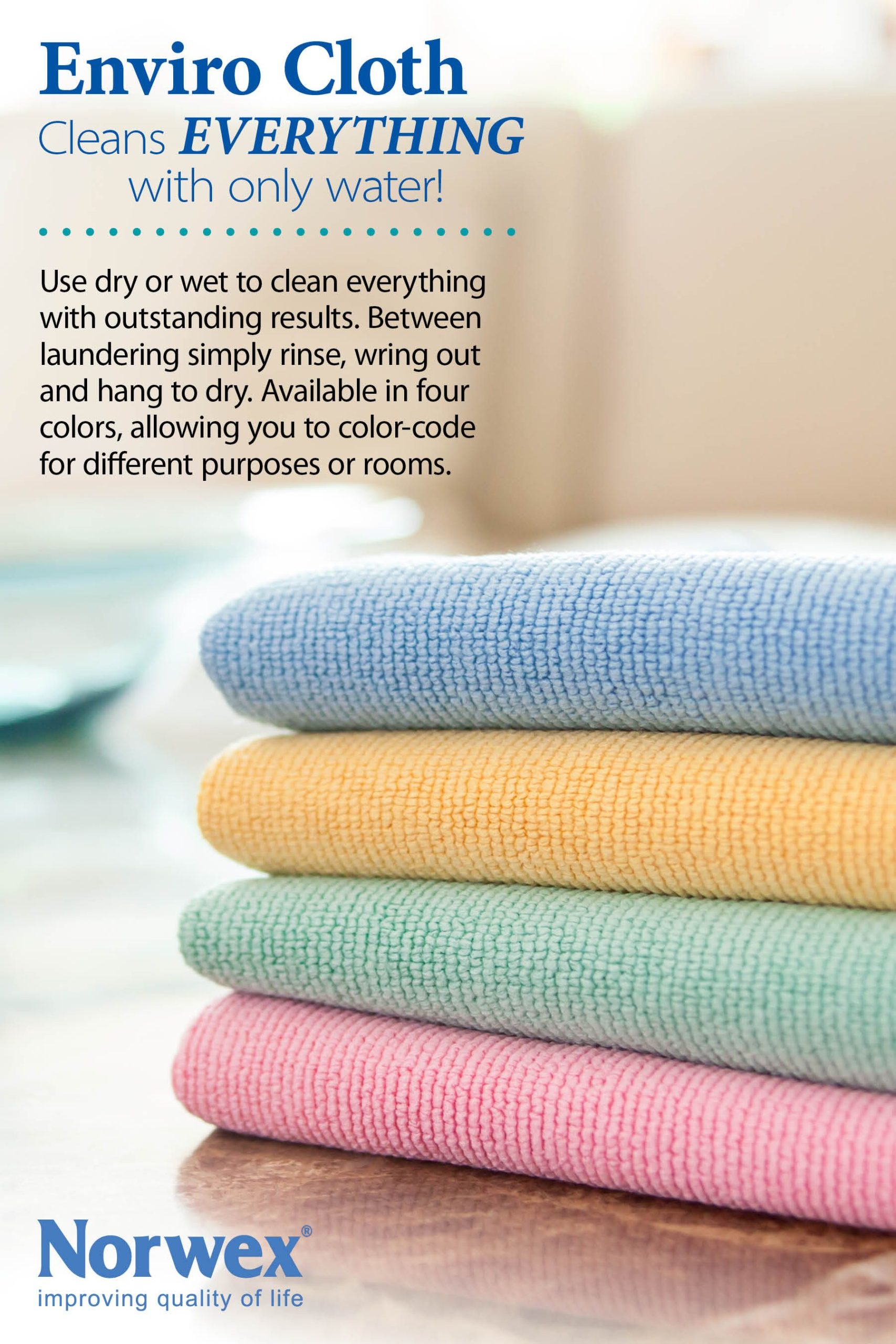
Hand sanitizer
Store bought hand sanitizers frequently contains a chemical called Triclosan, which can be quite harmful for users (and also promotes antibacterial-resistant bacteria). CNN Health has studied the effects of Triclosan and states, “Research has shown that Triclosan can disrupt the endocrine system, amplifying testosterone. In animal studies, it reduced muscle strength. It may also harm the immune system.".
The FDA recently released a list of approximately 100 hand sanitizers to avoid.
When buying a hand sanitizer, be sure to check the ingredients, if it does not contain the CDC’s recommended minimum of 60% alcohol you may be buying a hand sanitizer that won't work for the Coronavirus. According to this article from flying off store shelves and listed by sellers on Amazon for outrageous prices. Here is what you need to know.

Norwex Timeless Natural Hand Cleaner
This is NOT a hand sanitizer, it does not contian alcohol therefore it does NOT kill viruses. I have used this natural hand cleaner for years.
Organic Lemon, Rosemary and Lavender extracts have natural astringent qualities to thouroughly clean hands. Organic Aloe Vera, Olive Oil and gluten-free Wheat Germ Oil extract help hydrate, nourish and condition the skin. The travel-sized tube makes it suitable for flying and storing in a purse, desk drawer, diaper bag or child’s backpack.
Free of
• Alcohol
• Parabens
• Sulfates
• GMOs
• Benzalkonium chloride (BAC)
• Fragrances are phthalate-free
• Petroleum-derived ingredients
• Triclosan
• Petroleum solvents
• Artificial colors/dyes
• Gluten

Honest Company Hand Sanitizer
Not ready to make the switch away from hand sanitizer? The Honest Company has one with enough alcohol (62%) to kill germs and virsus, but without all the other harmful chemicals.
A plant-based sanitizer that effectively kills 99.9% of germs and bacteria. Hypoallergenic and dermatologist-tested, our quick-drying spray formula is made with a combination of naturally-derived glycerin and aloe to help leave skin feeling soft and moisturized.

***Cleaning paste***
I can't say enough about the cleaning paste. I have used it to make our leather stools in our kicthen look like brand new, make my kitchen and bathroom sink basins spotless, clean toilet seats, and get all the tough spots off my stove top etc. They don't call this product elbow grease in a jar for nothing. I have seen youtube videos showing people getting permanent marker off their tile. Also, a small amount on your cleaning cloth or sponge goes a long way, so one container of the cleaning paste lasts a long time.
**Not for use on brushed stainless steel, nickel, pewter, aluminum or wood.
Benefit
- Removes rust stains, hard water stains, scuff marks, permanent marker, dirt, grime and more.
- Easily and quickly removes soap scum and caked-on dirt and grime to get surfaces clean and sparkling, with minimal effort.
- Quickly brings stainless steel sinks and faucets to a high shine.
- Erases scuff marks and permanent marker from ceramic tile, laminate, linoleum and walls.
- Great for car tire white walls, sink basins, tubs, shower floors, countertops and stoves.
- Works to remove burn marks from pots, pans and appliances.
- Brings chrome to a sparkling shine.
- Works throughout the house as well as outdoors, including lawn furniture, campers and boats.
- Cleans, protects and polishes in one application.
- Phosphate-free.
- Comes as a solid, which means less packaging.
- Long-lasting; a little goes a long way.
- Packaging is recyclable.

Norwex's Dry Mop
There is no shortage of videos on youtube showing amazing results from Norwex products. Below is a very short video (under 2 min) that compares using a vacuum and Norwex's dry mop. I used to use a vacuum all the time to clean my hardwood floors. I have switched to using the dry mop, and it saves me so much time. After using it, I clean it off using the rubber brush and it is ready to be used again.
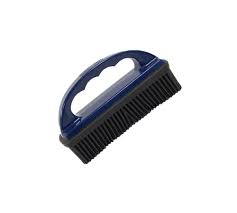
The dry mop is statically changed and picks up the smallest particles of dirt, dust, crumbs, and more. It will not "pick up" large items, I usually just push those into a pile as it picks up the small particles into the mop. Added bonus, it is made of 50% recycled materials.
Then follow by using the wet mop with just water.
Norwex's Wet Mop
The wet mop can be used for washing both floors and walls with water only.
It is made from 70% recycled materials. This mop traps dust and grime in the pad, and removes up to 99% of bacteria from a surface using only water.

Norwex's Tile Mop
Special nylon fibers are woven into our microfiber pad to make removing dirt and debris from tile floors quick and easy. Removes up to 99% of bacteria from a surface using only water.
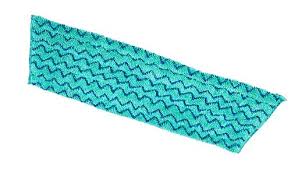
Dusting Mitt
I have two dutsing mitts, I put one on each hand, rub my hands togehter to create static electricity and walk around dusting everything in sight.
Many popular spray cleaners release harmful aerosols into the air. Rub-on furniture polish may bring a luster to wood, but over time it can dull the finish, attract dust and create buildup.
The Norwex Dusting Mitt is a chemical-free solution to dusting. It attracts dust like a magnet and even keeps it from resettling. Just slip this dustcloth Dusting Mitt on your hand and you’re ready to go! The static electricity created as the Dusting Mitt passes over a surface allows it to effectively pick up dust from all surfaces, leaving your home cleaner so you can breathe easier.
The Dusting Mitt can be used wet or dry and is ideal for quick, eco-friendly dusting throughout the house, including blinds, screens and other hard-to-clean areas. With its thick texture; durable, plush fibers and unique mitt design, the Dusting Mitt attracts and holds dust and other dust-related allergens and won’t let them go.
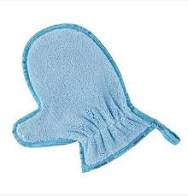
Window Cloth
This is one of my favorite products, I use it on every shiney surface in our house from mirrors, glass tables, and windows. It leaves everything spotless.
The window cloth gets windows, mirrors, and any other shiney surface sparkly clean using just water. The soft, tightly woven microfiber removes up to 99% of bacteria and leaves shiny surfaces spotless with no streaks or residues. If you have a particularly dirty surface to clean, you can use the envirocloth frist, and then polish with the window cloth.

Bathroom cleaner
I like to use the bathroom cleaner with the ergonomic toilet brush to make my toilet bowl shine.
Highly concentrated, biodegradable ingredients quickly and easily clean toilets, basins and most other hard surfaces with minimal effort. The gel's deep penetration allows for powerful cleaning and descaling in one application. Effectively removes hard water deposits, rust, soap scum and more.
- Squirt a light stream over the inside bowl area, spreading around the bowl and under the rim with a toilet brush.
- Allow to work 3 to 5 minutes then flush clean.
- Wipe bowl exterior and seat with a Norwex cloth.
- For general cleaning, dilute 1 oz. of Bathroom Cleaner with 7 oz. of water in a spray bottle.
- Spray entire area, scrub as needed, rinse and wipe clean.
Free From
- Phosphates
- APEs (alkyl phenol ethoxylates)
- Synthetic fragrance

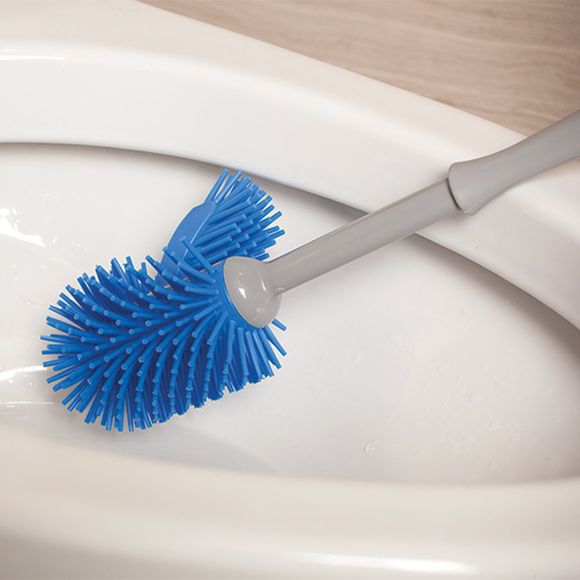
I would recommend checking out their collections, you will save some money and you can get some products that are individually sold out. The safe haven 5 set is a perfect collection to start with.
Click here more of my favorite Norwex products. If you are interested in buying any of these products or have any questions, please feel free to comment below or contact me here. You can visit Norwex's website directly here.
Subscribe below.
